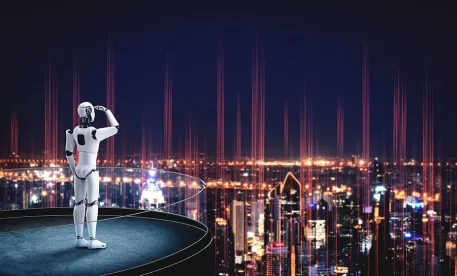The growing popularity of art generated by Artificial Intelligence (AI) is no longer just a question of whether it is morally right to replace human artists. Now the discussion has expanded to consider the possible legal ramifications of art that is produced with an algorithm based on the data of other existing art styles. How can this be considered an original artwork and who is the author? These are all questions that complicate copyright laws which require that a work be original in order to be protected intellectual property.
Authorship
Attributing authorship is essential to determining who has legal rights to the intellectual property in question and who is entitled to copyright protections. When it comes to AI-generated art, there has been confusion over whether to attribute authorship to the person who designs the algorithm that drives the AI software or whether the person training the software by inputting their own directives should be considered the author.
While some might be tempted to consider the AI itself to be the author, the U.S. Copyright Office has gone on record to say they “will refuse to register a claim if it determines that a human being did not create the work” and would exclude works “produced by machine or mere mechanical process that operates randomly or automatically without any creative input […] from a human author” in Naruto v. Slater. This case was not addressing AI directly but was determining the authorship of a selfie taken by a monkey.
Copyright
AI art is considered to be “work made for hire” under existing copyright law which would attribute authorship to the software engineer. This oversimplified interpretation leaves much to be desired and makes the software engineer vulnerable to a litany of legal issues that can follow as a result of user-inputs. It can also cause a range of problems when it comes to determining who owns the rights to the artwork and how it can be used.
Originality
Copyright law requires that a work be original and have at least a minimal creative contribution in order to be protected. Given that AI art is driven by an algorithm that is fed by other existing art certainly makes this a challenging gray area. A traditional artist may draw inspiration from artists throughout history, but they still must establish that it produces a uniquely original result. For example, an artist that wants to use a cubist style will need to understand the cornerstone attributes of what qualifies as cubist by observing other cubist works of art, but the scene they ultimately create must be their own. With AI art, the learning process is often confused with the application process because they are not as obviously distinct. While it may not be possible for humans to create art completely in a vacuum without even subconscious influence from other artists, it is less intentional than AI art that seemingly mimics by design.
Liability and Risk Reduction
AI art is already inviting legal actions which makes it a risk, especially when it is being applied for commercial use. To reduce the risk involved in using AI art, the content that feeds the algorithm must follow fair-use guidelines, otherwise, it is the responsibility of the author of the AI to establish a deal with the owners of copyrighted or trademarked content to inform the algorithm. Another issue that can arise is that the AI could potentially yield a resulting piece of art that is deemed offensive and it then becomes necessary to establish who is legally responsible for the resulting impacts it may have.
New Laws Are Needed
There is a wave of litigations about to play out in courts on how AI art will be treated under existing laws, but it is only just the beginning. One case to watch is going all the way to the Supreme Court, Goldsmith v. Warhol. Not only will these cases invite new interpretations of current laws, but the chances are good that new laws will need to be written to address the challenges that are unique to AI art. Current laws are simply insufficient for addressing the new technology so both users and creators of AI art should anticipate updates to these laws in the near future.



 />i
/>i
